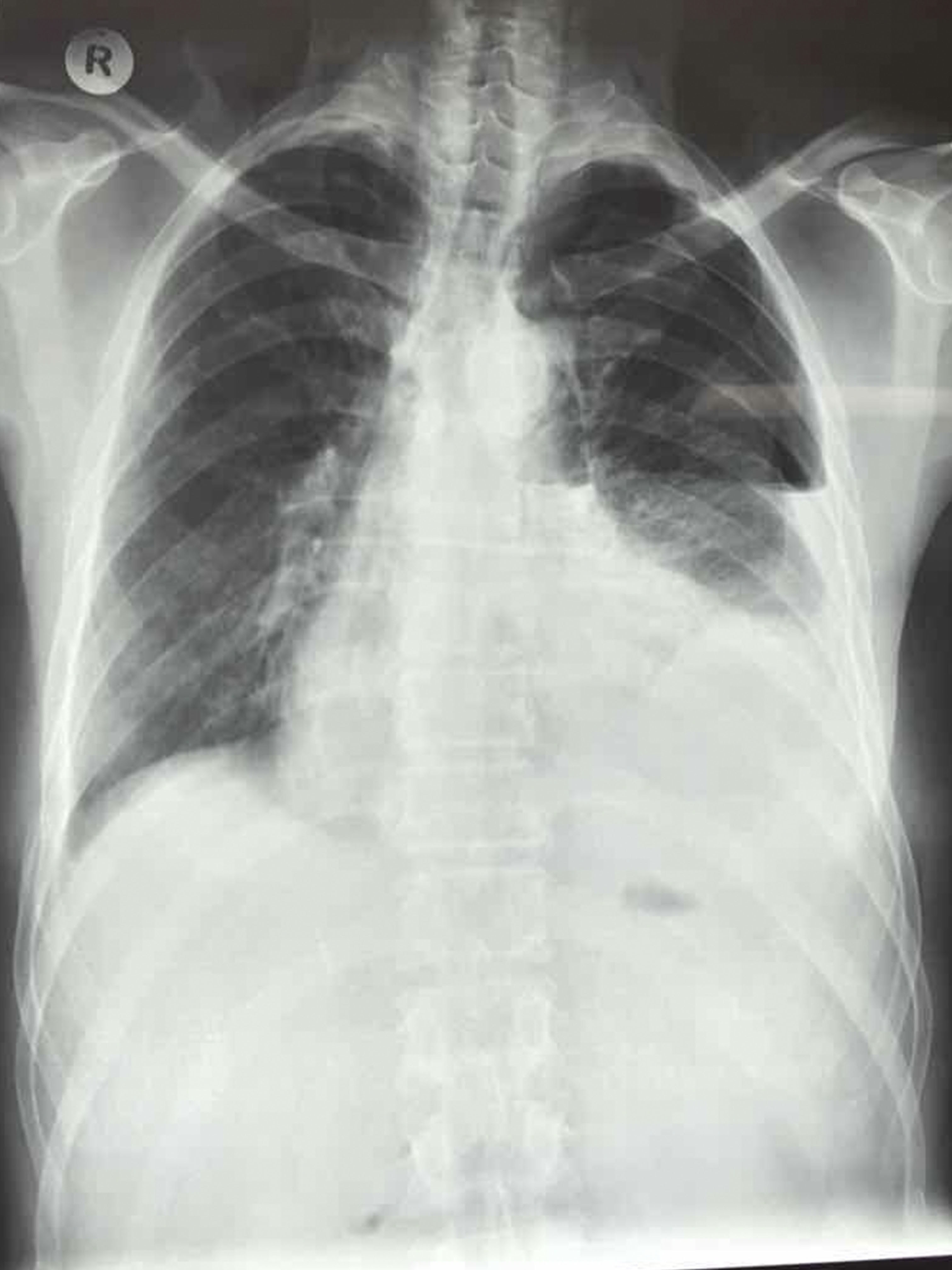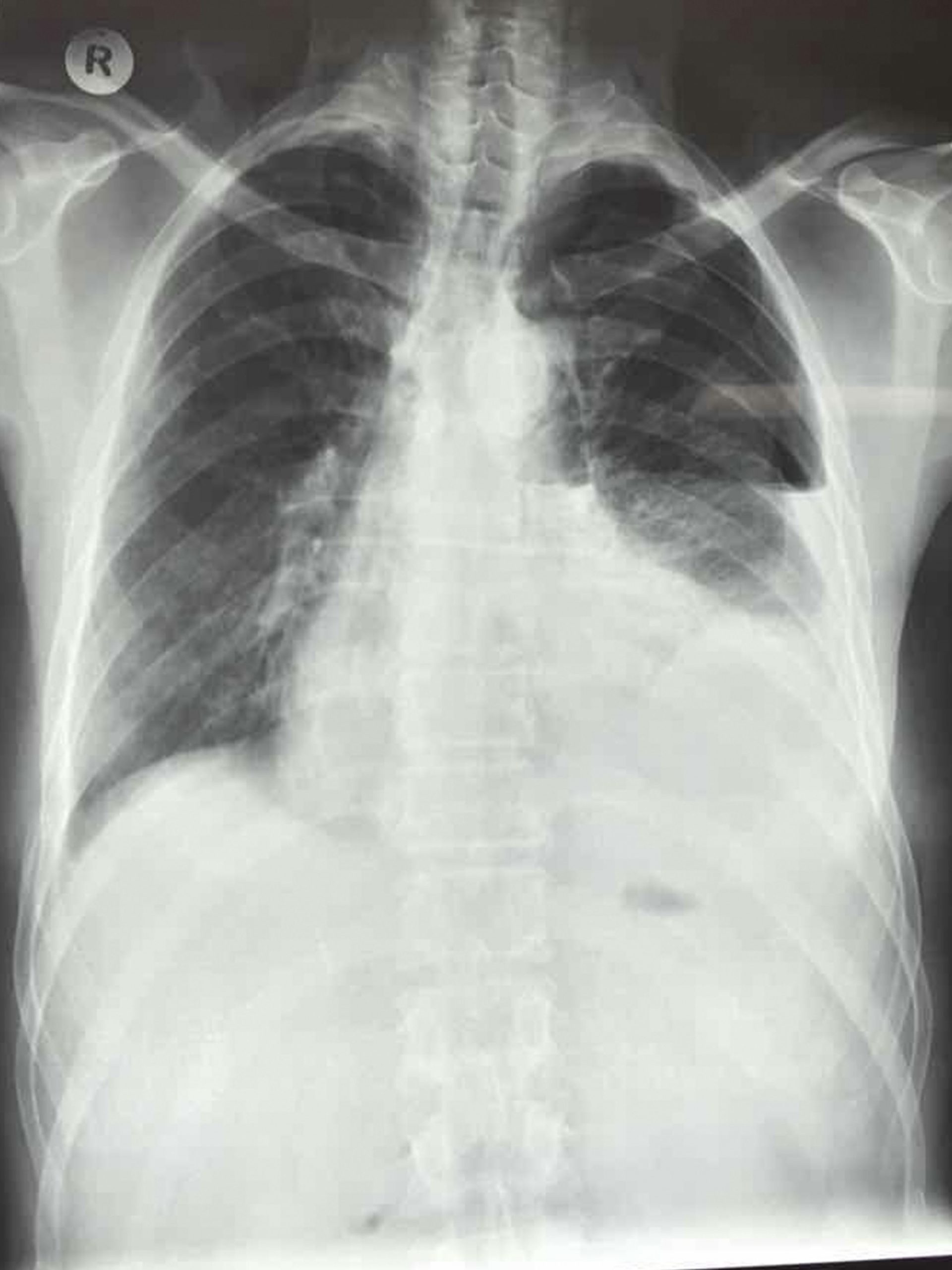Figure 1 Quiz of the Week
A 58-year-old male presents to the emergency department with dyspnea, and severe chest pain that radiates to his shoulder. He has a history of alcoholism and has just finished a 4-day drinking binge. On examination, crepitus is heard on palpation of the chest wall, and his pain worsens as he swallows. A diagnosis of Boerhaave syndrome is suspected and thoracentesis drains 800 ml of brown liquid.

Image credit: @G3KR.
Answer: Left posterolateral aspect of distal intrathoracic esophagus
This patient has Boerhaave syndrome, a perforation of the esophagus. It is caused by a combination of increased intraesophageal pressure and negative intrathoracic pressure associated with vomiting. The most common site of perforation is the left posterolateral aspect of the distal intrathoracic esophagus. Rupture of this area contaminates the mediastinal cavity with gastric contents, usually resulting in a left-sided hydropneumothorax. Perforation of the midesophagus typically produces a pleural reaction in the right hemithorax.
Read more and join the discussion now at Figure 1!
Explore cases, quiz yourself, and solve medical mysteries along with thousands of other medical professionals around the world on Figure 1, the free app where doctors expand their clinical knowledge.

